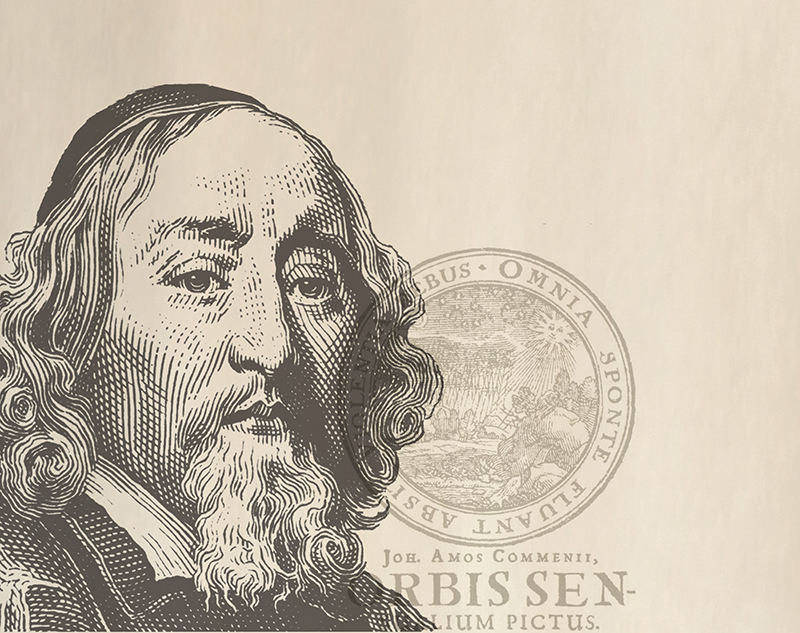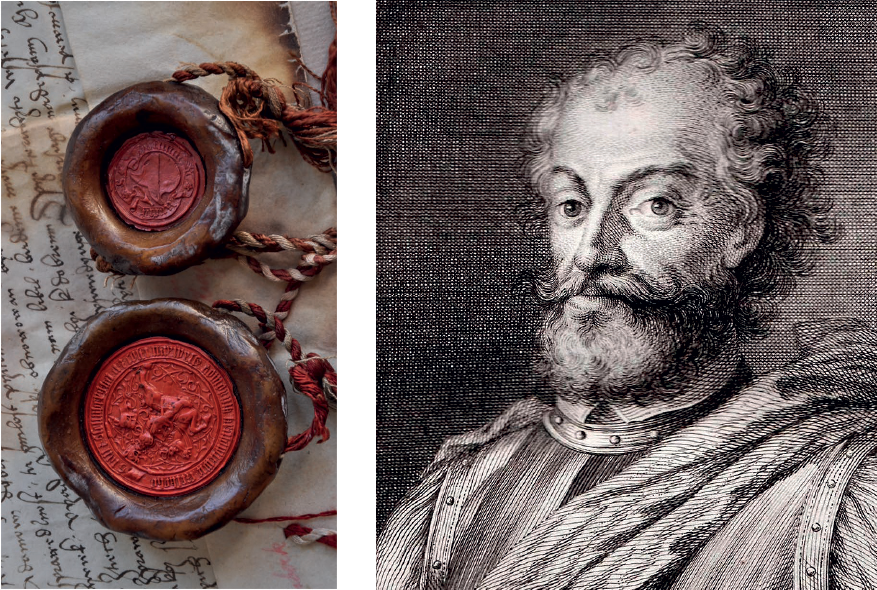




Jan Dušek among children (left). Photo: Archiv Jednoty bratrské.
František Hořák in uniform (right). Photo: Loučky municipality.
It wasn’t until the second half of the 19th century, after the Protestant Patent (1861), that the Unity could return to our country. The renewed Unity began its work in this region in 1897 (Turnov) and directly in Loučky in 1920 when Jan Dušek was sent as a religion teacher to the local school (standing among his students in the photograph). Later, he became a preacher. During World War II, Unity members in Loučky actively participated in the resistance. In 1943, the highly esteemed headmaster of local school František Hořák paid the highest price. In 1944, a Unity congregation with 533 members was established in Loučky. The land you are standing on was purchased with plans for a large prayer hall (the prayer hall plan is in the image). Unfortunately, the communist coup prevented its construction.
It wasn’t until the second half of the 19th century, after the Protestant Patent (1861), that the Unity could return to our country. The renewed Unity began its work in this region in 1897 (Turnov) and directly in Loučky in 1920 when Jan Dušek was sent as a religion teacher to the local school (standing among his students in the photograph). Later, he became a preacher. During World War II, Unity members in Loučky actively participated in the resistance. In 1943, the highly esteemed headmaster of local school František Hořák paid the highest price. In 1944, a Unity congregation with 533 members was established in Loučky. The land you are standing on was purchased with plans for a large prayer hall (the prayer hall plan is in the image). Unfortunately, the communist coup prevented its construction.

©
2024
Jednota bratrská